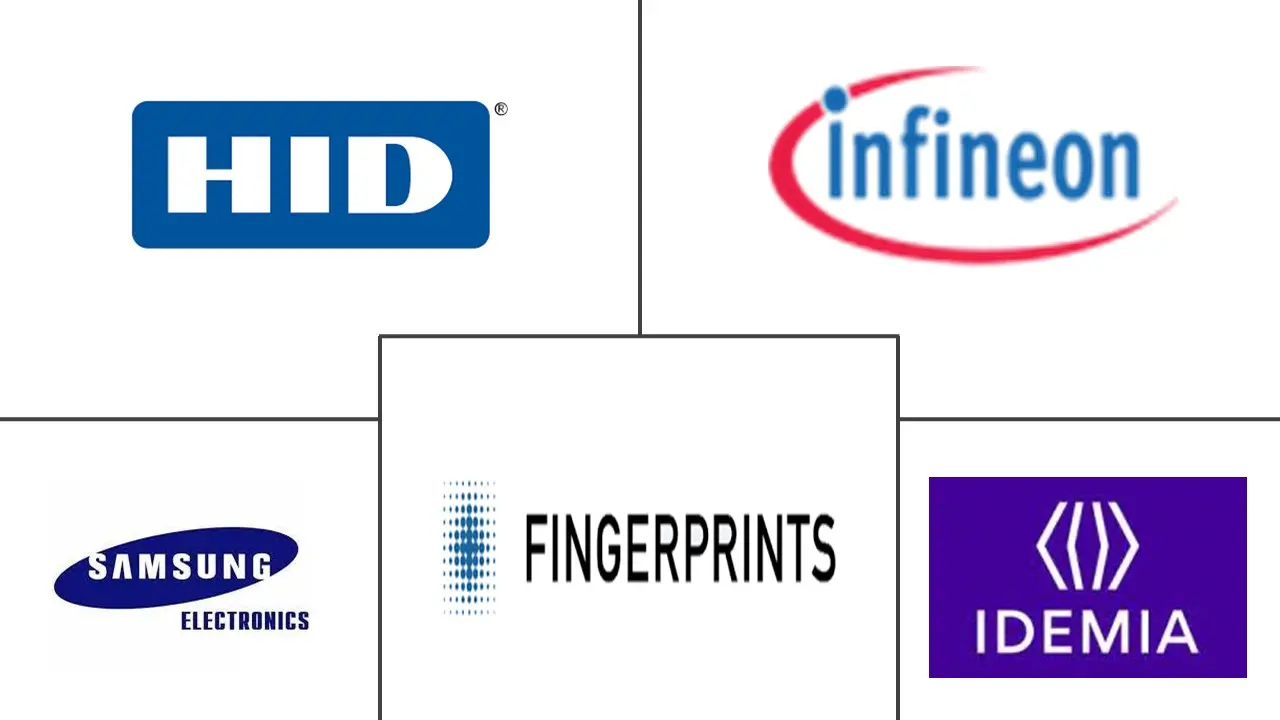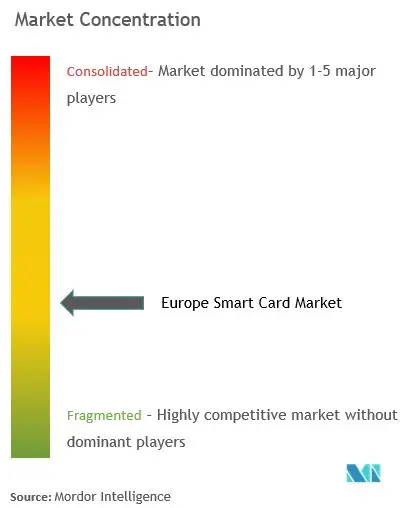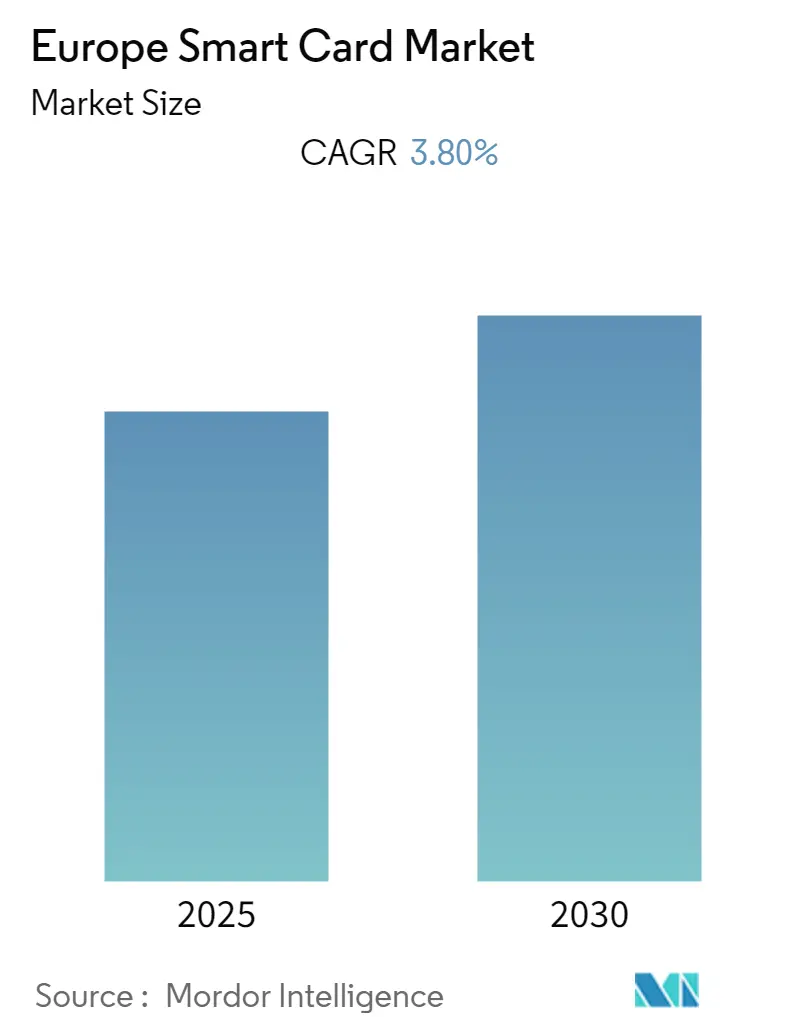
Europe Smart Card Market Analysis
The Europe Smart Card Market is expected to register a CAGR of 3.8% during the forecast period.
- Improvements in IoT and automation technologies drive the growth of the smart card market. Common examples of smart cards are Visa, MasterCard, and Europay. High-income people are very reluctant to take on the burden of carrying cash, so they are very fond of smart cards. This will contribute to the growth of the smart card market over the next few years.
- The European states dominated the healthcare and health insurance system, smart cards were adopted much earlier in this region. The European Commission's decision to mandate the introduction of a card-based alternative to the paper E-111 form for cross-border healthcare has led to explosive growth in its use.
- Companies are focsued on innovating new smart card as part of the business expansions by collaborating which is driving the market growth. For instance, in April 2022, IDEX Biometrics ASA announces collaboration with smart card technology and innovation company E-Kart to commercialize biometrics payment solutions in Eastern Europe. The collaboration between E-Kart and IDEX Biometrics allows demand growth for biometric smart cards in Eastern Europe, with targeted delivery to issuers by Q4 2022.
- One of the issues with smart cards is an attack that exploits a vulnerability caused by a poorly designed or implemented card or system. These vulnerabilities tend to be easier to exploit, replicate, and therefore share within the hacking community. However, proper monitoring and auditing of smart card manufacturing and distribution can resolve this issue.
- During the COVID-19 pandemic, smart cards benefited the healthcare sector, smart cards helped assist the healthcare providers in maintaining the efficiency of patient care and privacy safeguards. The benefits of smart cards also include instant patient verification, insurance processing, and more.
Europe Smart Card Market Trends
Healthcare and Education To Witness Rise In Adoption of Smart Cards
- The European health and health insurance system adopted smart cards much earlier than the United States. The European Commission's decision to mandate the introduction of a card-based alternative to the paper E-111 form for cross-border healthcare has led to explosive growth in its use. Countries like France is one of the leaders in the features and capabilities of healthcare smart cards, especially regarding security. Smart card technology is continually finding its way to new applications. The application grows according to the application's security needs with important information, documents, and credentials.
- Straightforward and secure online administrative practices and putting information at students' fingertips are essential to boosting student mobility across Europe. The European Student Card Initiative will develop an online one-stop-shop through the Erasmus+ Mobile App for students to manage all administrative steps related to their mobility period - before, during, and after their stay. It will allow students to find all the information they need to experience a high-quality mobility experience abroad.
- In November 2021, the European Commission announced that it operates on a Cancer Survivor Smart Card. The smart eCard, which even comes in the form of an app, will permit patients to associate with medical specialists, including the survivor's general practitioner.
- Funded by the EU4Health Program, the smart card is part of the commission`s Better Life for Cancer Patients Initiative. With this technology, the European Commission seeks to enhance communication between healthcare professionals and patients.
- Similarly, in February 2021, IDEMIA claims to be the first supplier to provide Germany with three different health cards, all based on the new era of technology labeled generation 2.1. Integrating NFC capabilities, these smart cards will drive health care communication efficiently for all users, both the medical profession and the patients, making IDEMIA play a major role in supporting the digitalization of health care in Germany.
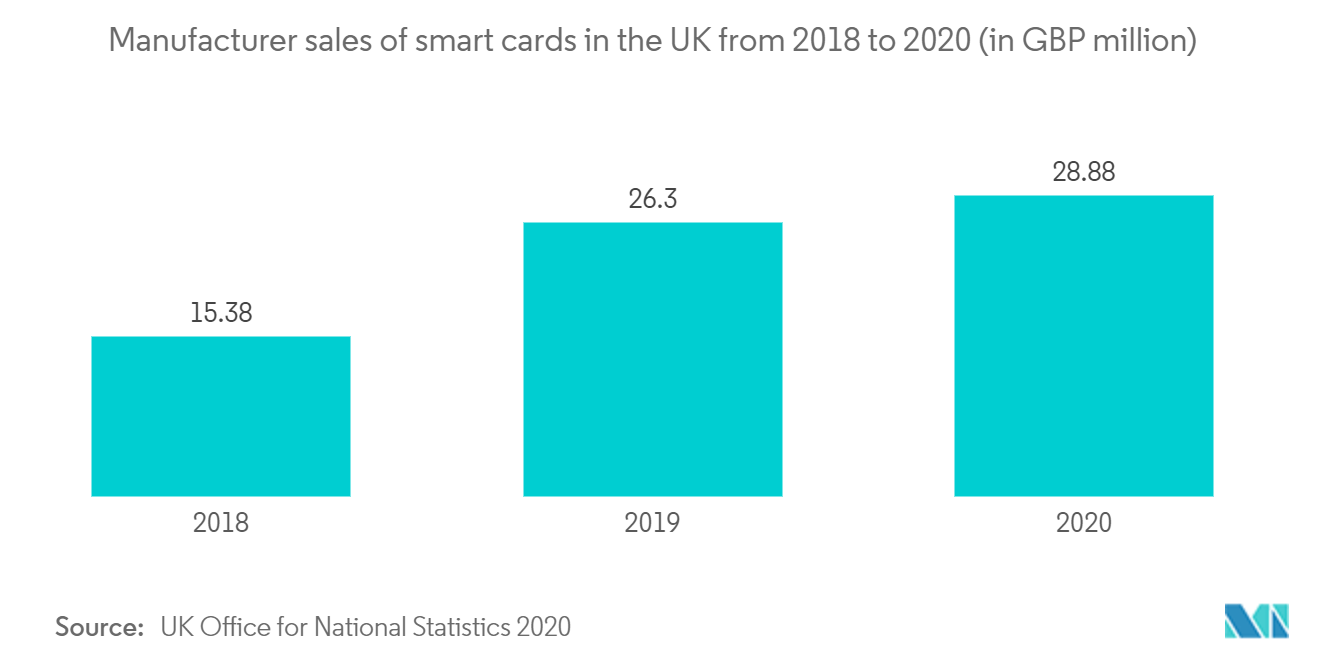
Increase In The Adoption of Contactless Cards
- Contactless technology has evolved into a major part of daily lives. A contactless smart card can perform on-card functions, securely hold, access, and collect data on the card and interact with a contactless smart card reader. The growing demand for reliable and secure contactless payment options across several end-user industries is anticipated to be a factor that drives the growth of contactless smart cards in the region.
- In May 2020, the Smart Payment Association (SPA), the body of the smart payments industry, published proposals for an Instant Payment Card that would expand SEPA instant Credit Transfer functionality to customers paying at the point of sale (POS) terminals in stores and retail outlets across Europe. Under new proposals from SPA, real-time transfers can be made available to consumers in-store using contact or contactless functionality
- The adoption of smart cards is expected to keep on growing in the wallets of French consumers. Despite the introduction of mobile payment platforms such as Apple Pay and Android Pay, the acceptance rate of actual point-of-sale payments is slowing. Contactless cards, on the other hand, have much greater traction.
- In March 2022, WISKey International Holding Ltd., a semiconductor, blockchain, and IoT enterprise announced that it is restoring and extending its business in smart card readers with Identiv. In 2022, the company will supply Identiv with high-end smart card reader chips for more than USD 1 million. The partnership extends to Identiv's contact, contactless, and dual-interface smart card readers, targeting healthcare, pharmaceuticals, government, and education applications.
- Moreover, in a survey conducted by Fingerprint Cards AB in July 2021, the company found that in 2020 over 80% of French consumers consider the contactless payment card easy to use. France was the first nation to roll out contactless payment cards along with the UK. Further, the survey implies this is not a short-term boom either, as 64% of French consumers desire to use contactless more.
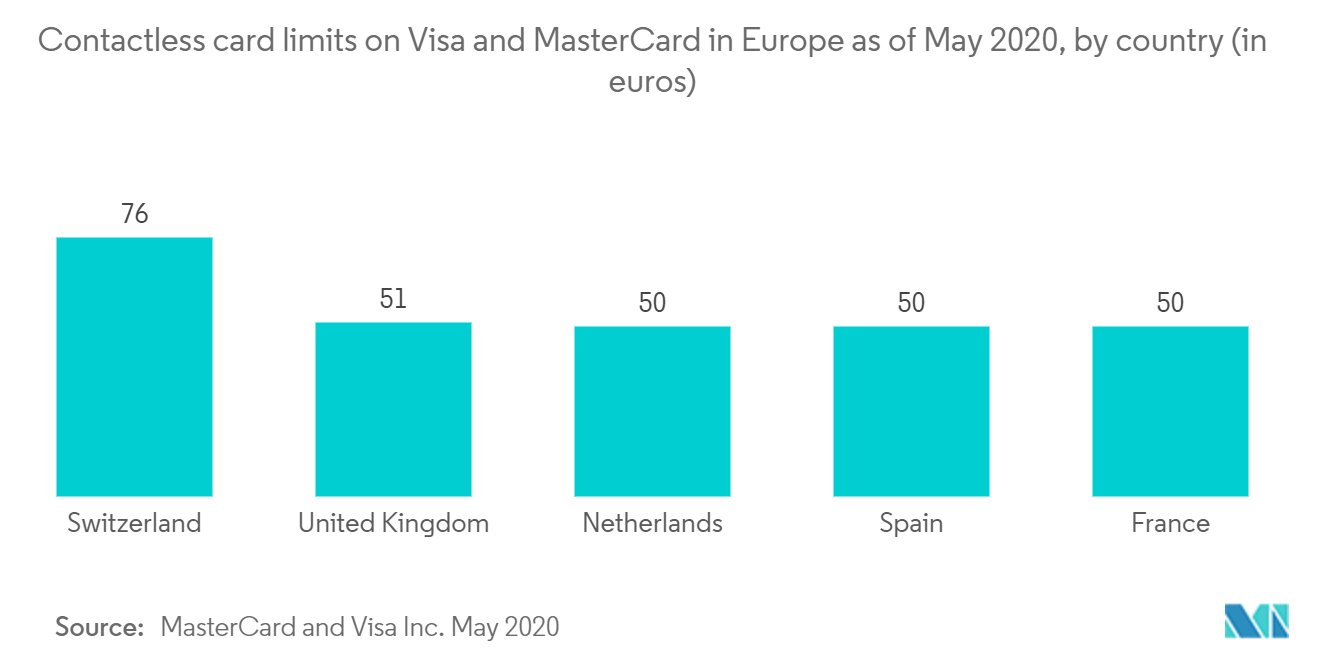
Europe Smart Card Industry Overview
The Europe Smart Cards market is moderately competitive as crucial players in the region are developing new solutions in the e-commerce market for various end-user applications. Companies are also investing and forming partnerships to grow their businesses in the region and provide the consumers with secure and safe smart cards.
- October 2021 - Infineon launches a new SECORA Pay portfolio on 40 nm technology with best-in-class contactless performance. The solution delivers increased contactless payment safety through various solutions, including sophisticated Java Card technologies, pre-certified payment options, smart accessories and wearables, and Visa, Mastercard, Discover, and American Express payment support.
- March 2021 - IDEMIA, G+D, and NXP release White Label Alliance (WLA) to provide smart card and online payment corporations an unbiased contactless charge popular as a response to develop the worldwide call for next-generation payment solutions for domestic and private-label payment brands. WLA sets and updates an open, comprehensive payment standard that enables ready-to-deploy dual interface payment solutions covering contact, contactless payment cards, and more.
Europe Smart Card Market Leaders
-
HID Global Corporation
-
Idemia France SAS
-
Fingerprint Cards AB
-
Infineon Technologies AG
-
Samsung Electronics Co., Ltd.
- *Disclaimer: Major Players sorted in no particular order
Europe Smart Card Market News
- September 2021 - Fingerprint Cards AB collaborated with Infineon by enabling biometric authentication. The partners combined Infineon's 40nm security controller (SLC38), the Fingerprints T-Shape 2 sensor module, and the latest biometric software for payments. In collaboration with Fingerprints, Infineon is working to promote high-performance payment solutions with biometric smart cards that are easy to integrate and scalable.
- May 2021 - IDEMIA partnered with Swissquote and PostFinance to release Yuh, a new digital finance app company with Smart Plastics banking cards and innovative packages. IDEMIA provided Yuh with an innovatively designed Smart Plastics payment card with a metal leaf logo (Smart Reflect) and a black core (Smart Edge) that matches the brand's personality. The company worked with Yuh to design an innovative glide pack that adds a premium and stylish finish to the end-user experience.
Europe Smart Card Industry Segmentation
Smart cards offer higher security and confidentiality than other financial information and transaction storage media, making them the perfect solution for e-commerce transactions. A smart card is a secure place to store valuable information such as private keys, account numbers, passwords, and personal information. The market studied is segmented by type that includes contact ot contactless cards. It also breifs about the smar card uses in multiple en-user markets such as transportation, BFSI. The studied market also breifs about the COVID-19 impact on the market and on-going trends.
| By Type | Contact-based |
| Contacless | |
| By End-User Vertical | BFSI |
| IT and Telecommunication | |
| Government | |
| Transportation | |
| Other End-User Industries ((Education, Healthcare, Entertainment, etc.) | |
| By Country | United Kingdom |
| Germany | |
| France | |
| Rest Of Europe |
Europe Smart Card Market Research FAQs
What is the current Europe Smart Card Market size?
The Europe Smart Card Market is projected to register a CAGR of 3.8% during the forecast period (2025-2030)
Who are the key players in Europe Smart Card Market?
HID Global Corporation, Idemia France SAS, Fingerprint Cards AB, Infineon Technologies AG and Samsung Electronics Co., Ltd. are the major companies operating in the Europe Smart Card Market.
What years does this Europe Smart Card Market cover?
The report covers the Europe Smart Card Market historical market size for years: 2019, 2020, 2021, 2022, 2023 and 2024. The report also forecasts the Europe Smart Card Market size for years: 2025, 2026, 2027, 2028, 2029 and 2030.
Our Best Selling Reports
Europe Smart Cards Industry Report
Statistics for the 2025 Europe Smart Card market share, size and revenue growth rate, created by Mordor Intelligence™ Industry Reports. Europe Smart Card analysis includes a market forecast outlook for 2025 to 2030 and historical overview. Get a sample of this industry analysis as a free report PDF download.

